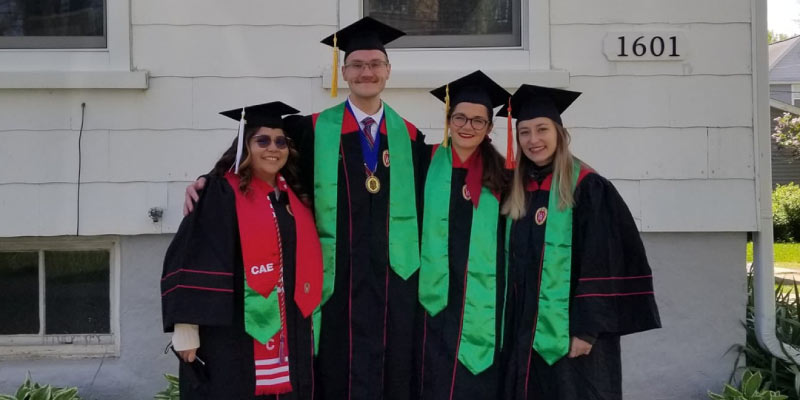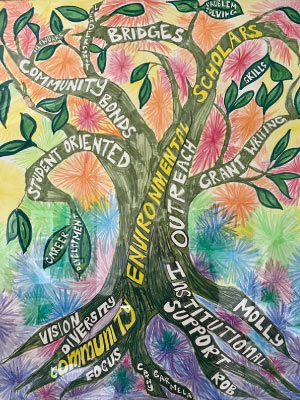
UW–Madison student Journey Prack is an entomology major who loves cooking. In her junior year, she joined the Community Environmental Scholars Program in UW–Madison’s Nelson Institute for Environmental Studies for its scholarship and relaxed learning environment.
But it also led her to the job she has today.
For a community service project with the Community Environmental Scholars Program, called CESP, Prack worked with a student organization that hosts dinners for people in Madison using recovered foods from the dining halls.
After finishing her degree, Prack wanted to continue her work serving the Madison community.
Through the program, she was introduced to Rooted, an organization focused on creating healthy, equitable and sustainable communities through collaboration in education, food and land.
She spent her summer teaching little kids about gardening and is now working full-time at Rooted, teaching kids about plants and nutrition at three Madison-area schools and leading cooking clubs at two of those schools.
“I would have never found out about my job at Rooted if I hadn’t joined CESP,” Prack said. “You never know what you could learn and it could open a lot of new doors that you maybe don’t know about.”
The Community Environmental Scholars Program originated following the passage of a 2010 state law that gives $100,000 annually to underrepresented students. The program initially only served junior and senior students, but since 2022, it’s been open to incoming first-year students in STEM majors using grants from the National Science Foundation. The program is crucial to the Nelson Institute’s mission to foster the next generation of leaders to protect and preserve the environment.
“Environmental studies in many ways is too big a topic,” said Robert Beattie, director of the Community Environmental Scholars Program and a member of the teaching faculty at the Nelson Institute. “There are some people who really want to work at that small local scale … So the idea behind the program is just, how do you connect environment and community?”
Cohorts of around 10 students are enrolled in the program, receiving scholarships and joining a three-semester seminar. The first semester focuses on introduction to core ideas, the second focuses on working with local community partners, and the third focuses on professional development.
Beattie said the cohort system creates a low-pressure environment for students to work together across the three cohorts. For example, third-semester students can help incoming students by sharing their experience while also continuing to benefit from the incoming students as new materials and ideas are introduced each semester.
 “We’re teaching them to build the skills they need in order to be good environmental citizens connecting their knowledge from whatever their majors are to community engagement and community service, and they’re responsible for designing, defining that connection,” Beattie said.
“We’re teaching them to build the skills they need in order to be good environmental citizens connecting their knowledge from whatever their majors are to community engagement and community service, and they’re responsible for designing, defining that connection,” Beattie said.
Students lead the program, organize classes, select their community service projects, invite guest speakers to the classroom and more.
To current student Angel Salas, the close-knit cohort system means he gets to know and interact with the people in his cohort better every week than in his 200-person mechanical engineering lecture.
For his community service project, Salas is working on a solar power module to charge all the electrical equipment in the Allen Centennial Garden.
Salas wanted to go into helping the planet after learning about the climate crisis at a very young age. “And since I’m good at math and I know a lot about science, engineering was the place to be,” he said.
Students in the program are from all kinds of majors and backgrounds. They all bring something different to the program.
Beattie said ‘underrepresented’ is defined in a pretty broad way, with one requirement being financial need. Beyond that, students often tell the program what they consider to be underrepresented in environmental studies.
“I know some of my past TAs want to come back and steal my job because the students are so cool,” Beattie said. “You know, every day you look at them and you’re like, I was never this cool as an undergraduate.”